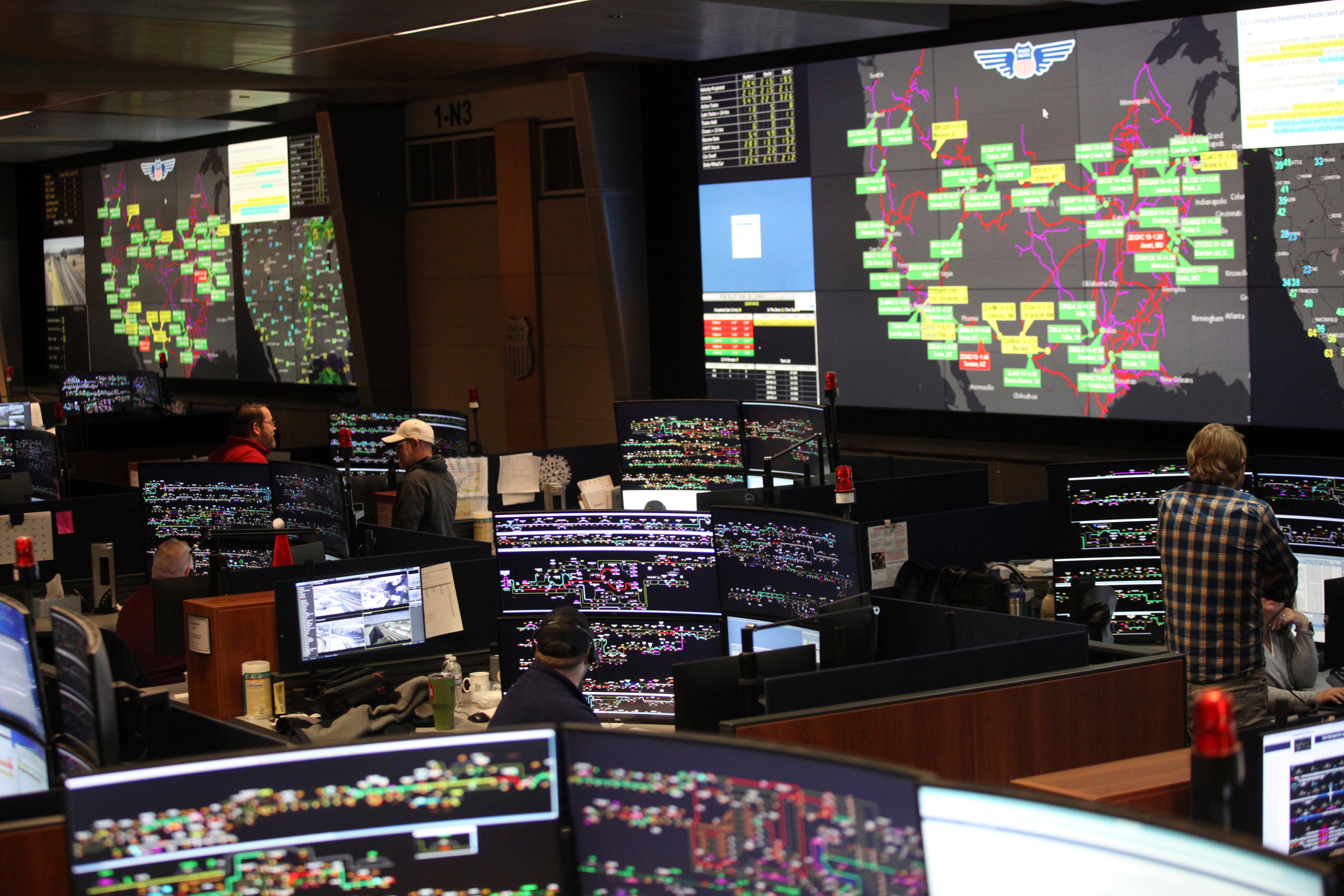Investigators say dispatching errors led to Union Pacific train crash that killed 2 workers
Dispatching errors and the failure of two backup systems allowed a Union Pacific train to slam into 74 railcars that had been parked on a side track for nine months in Southern California in 2022

Your support helps us to tell the story
From reproductive rights to climate change to Big Tech, The Independent is on the ground when the story is developing. Whether it's investigating the financials of Elon Musk's pro-Trump PAC or producing our latest documentary, 'The A Word', which shines a light on the American women fighting for reproductive rights, we know how important it is to parse out the facts from the messaging.
At such a critical moment in US history, we need reporters on the ground. Your donation allows us to keep sending journalists to speak to both sides of the story.
The Independent is trusted by Americans across the entire political spectrum. And unlike many other quality news outlets, we choose not to lock Americans out of our reporting and analysis with paywalls. We believe quality journalism should be available to everyone, paid for by those who can afford it.
Your support makes all the difference.Dispatching errors combined with the failure of two backup systems allowed a Union Pacific train to slam into 75 railcars that had been parked on a side track for nine months in Southern California two years ago, killing an engineer and a conductor, according to a report issued Thursday.
The National Transportation Safety Board's final report detailed what caused the crash in the desert near the Salton Sea in September 2022.
Investigators determined that mistakes made by dispatchers at the railroad's headquarters in Omaha led to the train being routed directly into the parked railcars. One dispatcher even overruled the train crew who said they had been told by a colleague that cars were still parked on that siding, because his computer screen didn't show anything on that track.
The NTSB said a dispatcher inappropriately removed a note in the computer indicating the track was occupied two weeks earlier without verifying the tracks were empty. Another dispatcher that night ignored a separate warning about the siding and sent the train into it also without checking to be sure the tracks were empty. Both actions violated Union Pacific’s rules.
The railroad didn’t immediately comment on the report.
Railroad safety has been a under scrutiny nationwide ever since a Norfolk Southern train derailed in East Palestine, Ohio, and spilled a collection of hazardous chemicals that caught fire. Half the town was evacuated three days later when officials decided to blow open five tank cars and burn the vinyl chloride inside, creating a massive black plume of smoke.
At the time of the California crash, the 7,368-foot (2,250-meter) train had two locomotives on the front and two on the back. It was the crew in the rear locomotives that were killed because the train backed into the cars.
Normally, a system installed on the tracks would electronically detect the parked railcars and reinforce the note in the dispatchers' computers. But that system failed because rust built up on the track and wheels of the cars during the months they sat idle and prevented the track circuit from conducting electricity.
Investigators checked the computer logs for the weeks before the crash and found that sometimes cars parked on the tracks would show up in the system and at other times they would disappear because of the rust causing intermittent problems.
In addition, Union Pacific rules called for the switches leading into tracks where railcars are being stored long-term to be mechanically locked out. But the NTSB “found no spikes or clamps applied to the switches leading into Bertram siding, indicating that UP personnel had not followed its own rules for protection of railcars in long-term storage.”
After the crash, Union Pacific changed its rules to make it harder for that to happen. Dispatchers are now required to work with field managers to verify how long railcars are going to be stored and make sure maintenance workers remove tracks from service if the cars will be there more than 10 days.
Railroad managers also stressed with dispatchers that they must confirm a track is clear before removing a note in the computer saying they are occupied.